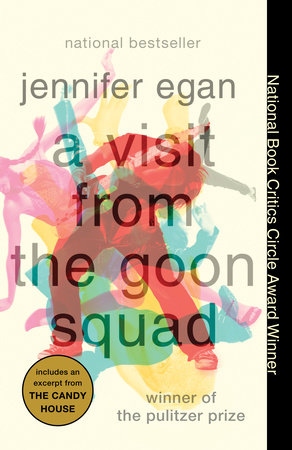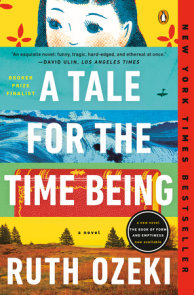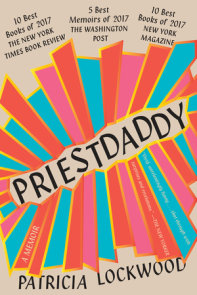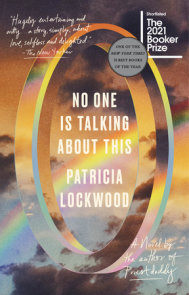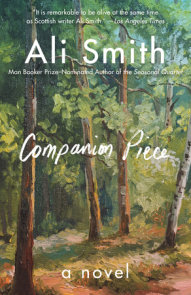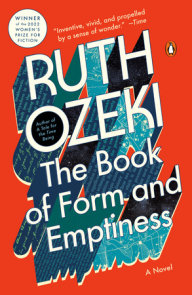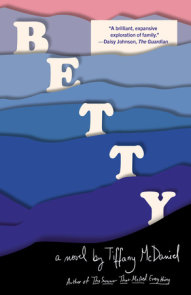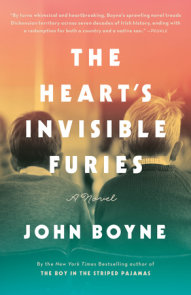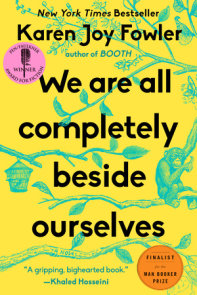READERS GUIDE
The questions, discussion topics, and suggestions for further reading that follow are designed to enhance your group’s discussion of Jennifer Egan’s stunning new work, A Visit from the Goon Squad. In a satirical and oddly touching book, Egan brings to life the recent past, captures the confusions and ambiguities of the present, and speculates about the future of America.A Note from Jennifer Egan
When I talk to audiences about how I came to write A Visit from the Goon Squad in the form it takes, someone invariably says, “I really wish I’d heard what you just said before reading the book; I would have enjoyed it more.” So it seems worth summarizing my remarks for the benefit of book clubs—or individual readers—who haven’t yet read the book, or might have read it and felt confused.
I began A Visit from the Goon Squad without a clear plan, following my own curiosity from one character and situation to the next. My guiding rules were only these: 1) Each chapter had to be about a different person. 2) Each chapter had to have a different mood and tone and approach. 3) Each chapter had to stand completely on its own. This last was especially important; since I ask readers to start over repeatedly in A Visit from the Goon Squad, it seemed the least I could do was provide a total experience each time.
In other words, you can read this book without making a single connection between any two chapters. They were written—and published—as individual pieces, apart from the book as a whole.
I didn’t think of A Visit from the Goon Squad as a novel while I was working on it; nor did I think of it as a collection of short stories. I honestly wasn’t sure what it was. Only when I found myself wanting to call its halves “A” and “B,” did I suddenly realize which genre I’d been working in all along: the concept album. By which I mean the great storytelling albums I grew up with in the 1970s: The Who’s Tommy, Pink Floyd’s The Wall, David Bowie’s Ziggy Stardust. A concept album is a story told in parts that sound completely different from each other (that’s the fun of an album, right?), yet also work together.
So, as you read A Visit from the Goon Squad, don’t worry about whether you’re “getting it” or whether it’s really a novel, or what connections you might have missed. None of that matters. The point is to have fun reading a tangle of stories in a lot of contrasting styles. If you’ll do that, then you’re exactly the reader I’d hoped for.
Introduction
Moving from San Francisco in the 1970s to a vividly imagined New York City sometime after 2020, Jennifer Egan portrays the interlacing lives of men and women whose desires and ambitions converge and collide as the passage of time, cultural change, and private experience define and redefine their identities. Bennie Salazar, a punk rocker in his teenage years, is facing middle age as a divorced and disheartened record producer. His cool, competent assistant, Sasha, keeps everything under control—except for her unconquerable compulsion to steal. Their diverse and diverting memories of the past and musings about the present set the stage for a cycle of tales about their friends, families, business associates, and lovers.A high school friend re-creates the wild, sexually charged music scene of Bennie’s adolescence and introduces the wealthy, amoral entertainment executive Lou Kline, who becomes Bennie’s mentor and eventually faces the consequences of his casual indifference to the needs of his mistresses, wives, and children. Scotty, a guitarist in Bennie’s long-defunct band, emerges from a life lived on the fringes of society to confront Bennie in his luxurious Park Avenue office, while Bennie’s once-punk wife, Stephanie, works her way up in the plush Republican suburb where they live. Other vignettes explore Sasha’s experiences and the people who played a role in her life. An uncle searching for Sasha when she runs away at seventeen becomes aware of his own disillusionments and disappointments as he tries to comfort her. Her college boyfriend describes a night of drug-fueled revelry that comes to a shocking end. And her twelve-year-old daughter contributes a clever PowerPoint presentation of the family dynamics—including hilariously pointed summaries of her mother’s “Annoying Habit #48” and “Why Dad Isn’t Here.”
From a trenchant look at the vagaries of the music business and the ebb and flow of celebrity to incisive dissections of marriage and family to a provocative vision of where America is headed, A Visit from the Goon Squad is unnerving, exhilarating, and irresistible.
Questions and Topics for Discussion
1. A Visit from the Goon Squad shifts among various perspectives, voices, and time periods, and in one striking chapter (pp. 234–309), departs from conventional narrative entirely. What does the mixture of voices and narrative forms convey about the nature of experience and the creation of memories? Why has Egan arranged the stories out of chronological sequence?
2. In “A to B” Bosco unintentionally coins the phrase “Time’s a goon” (p. 127), used again by Bennie in “Pure Language” (p. 332). What does Bosco mean? What does Bennie mean? What does the author mean?
3. “Found Objects” and “The Gold Cure” include accounts of Sasha’s and Bennie’s therapy sessions. Sasha picks and chooses what she shares: “She did this for Coz’s protection and her own—they were writing a story of redemption, of fresh beginnings and second chances” (pp. 8–9). Bennie tries to adhere to a list of no-no’s his shrink has supplied (p. 24). What do the tone and the content of these sections suggest about the purpose and value of therapy? Do they provide a helpful perspective on the characters?
4. Lou makes his first appearance in “Ask Me If I Care” (pp. 39–58) as an unprincipled, highly successful businessman; “Safari” (pp. 59–83) provides an intimate, disturbing look at the way he treats his children and lover; and “You (Plural)” (pp. 84–91) presents him as a sick old man. What do his relationships with Rhea and Mindy have in common? To what extent do both women accept (and perhaps encourage) his abhorrent behavior, and why to they do so? Do the conversations between Lou and Rolph, and Rolph’s interactions with his sister and Mindy, prepare you for the tragedy that occurs almost twenty years later? What emotions does Lou’s afternoon in “You (Plural)” with Jocelyn and Rhea provoke? Is he basically the same person he was in the earlier chapters?
5. Why does Scotty decide to get in touch with Bennie? What strategies do each of them employ as they spar with each other? How does the past, including Scotty’s dominant role in the band and his marriage to Alice, the girl both men pursued, affect the balance of power? In what ways is Scotty’s belief that “one key ingredient of so-called experience is the delusional faith that it is unique and special, that those included in it are privileged and those excluded from it are missing out” (p. 98) confirmed at the meeting? Is their reunion in “Pure Language” a continuation of the pattern set when they were teenagers, or does it reflect changes in their fortunes as well as in the world around them?
6. Sasha’s troubled background comes to light in “Good-bye, My Love” (pp. 208–33). Do Ted’s recollections of her childhood explain Sasha’s behavior? To what extent is Sasha’s “catalog of woes” (p. 213) representative of her generation as a whole? How do Ted’s feelings about his career and wife color his reactions to Sasha? What does the flash-forward to “another day more than twenty years after this one” (p. 233) imply about the transitory moments in our lives?
7. Musicians, groupies, and entertainment executives and publicists figure prominently in A Visit from the Goon Squad. What do the careers and private lives of Bennie, Lou, and Scotty (“X’s and O’s”; “Pure Language”); Bosco and Stephanie (“A to B”); and Dolly (“Selling the General”) suggest about American culture and society over the decades? Discuss how specific details and cultural references (e.g., names of real people, bands, and venues) add authenticity to Egan’s fictional creations.
8. The chapters in this book can be read as stand-alone stories. How does this affect the reader’s engagement with individual characters and the events in their lives? Which characters or stories did you find the most compelling? By the end, does everything fall into place to form a satisfying storyline?
9. Read the quotation from Proust that Egan uses as an epigraph (p. ix). How do Proust’s observations apply to A Visit from the Goon Squad? What impact do changing times and different contexts have on how the characters perceive and present themselves? Are the attitudes and actions of some characters more consistent than others’, and if so, why?
10. In a recent interview Egan said, “I think anyone who’s writing satirically about the future of America and life often looks prophetic. . . . I think we’re all part of a zeitgeist and we’re all listening to and absorbing the same things, consciously or unconsciously. . . .” (Brooklyn Daily Eagle, February 8, 2010). Considering current social trends and political realities, including fears of war and environmental devastation, evaluate the future Egan envisions in “Pure Language” and “Great Rock and Roll Pauses.”
11. What does “Pure Language” have to say about authenticity in a technological and digital age? Would you view the response to Bennie, Alex, and Lulu’s marketing venture differently if the musician had been someone other than Scotty Hausmann and his slide guitar? Stop/Go (from “The Gold Cure”), for example?
(For a complete list of available reading group guides, and to sign up for the Reading Group Center enewsletter, visit: www.readinggroupcenter.com.)









